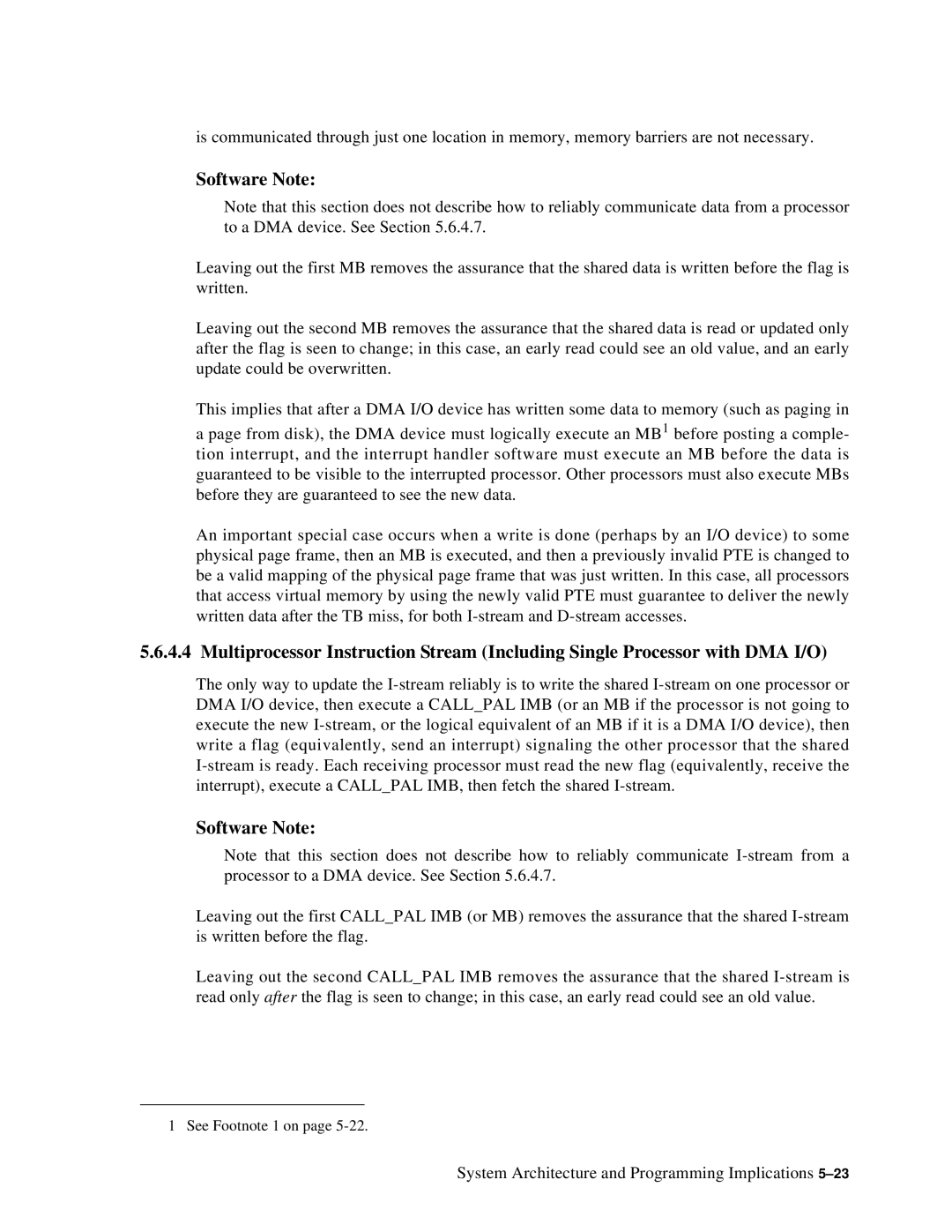is communicated through just one location in memory, memory barriers are not necessary.
Software Note:
Note that this section does not describe how to reliably communicate data from a processor to a DMA device. See Section 5.6.4.7.
Leaving out the first MB removes the assurance that the shared data is written before the flag is written.
Leaving out the second MB removes the assurance that the shared data is read or updated only after the flag is seen to change; in this case, an early read could see an old value, and an early update could be overwritten.
This implies that after a DMA I/O device has written some data to memory (such as paging in
a page from disk), the DMA device must logically execute an MB1 before posting a comple- tion interrupt, and the interrupt handler software must execute an MB before the data is guaranteed to be visible to the interrupted processor. Other processors must also execute MBs before they are guaranteed to see the new data.
An important special case occurs when a write is done (perhaps by an I/O device) to some physical page frame, then an MB is executed, and then a previously invalid PTE is changed to be a valid mapping of the physical page frame that was just written. In this case, all processors that access virtual memory by using the newly valid PTE must guarantee to deliver the newly written data after the TB miss, for both
5.6.4.4 Multiprocessor Instruction Stream (Including Single Processor with DMA I/O)
The only way to update the
Software Note:
Note that this section does not describe how to reliably communicate
Leaving out the first CALL_PAL IMB (or MB) removes the assurance that the shared
Leaving out the second CALL_PAL IMB removes the assurance that the shared
1 See Footnote 1 on page 5-22.
System Architecture and Programming Implications
